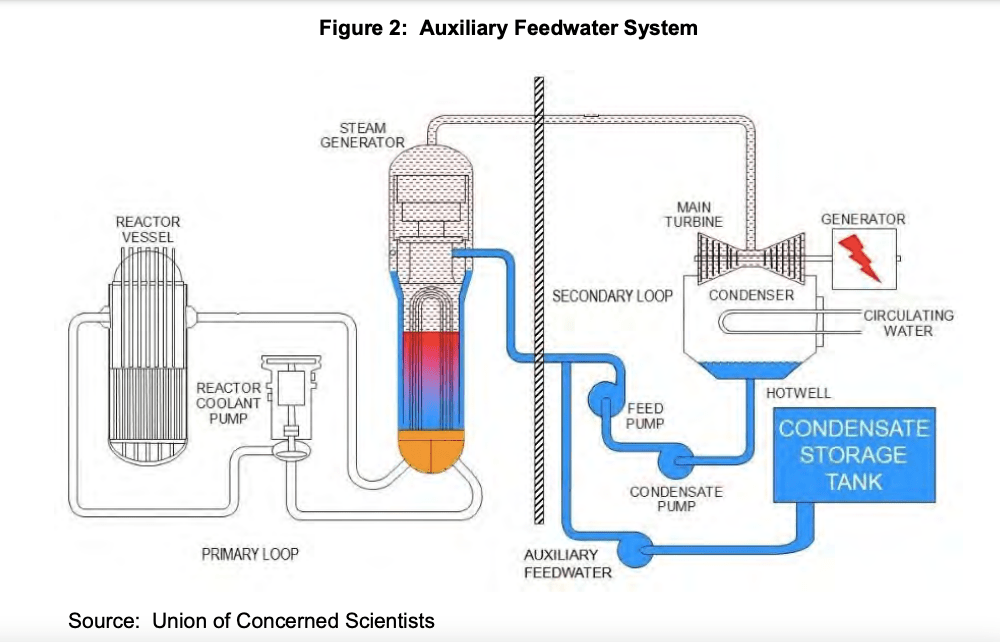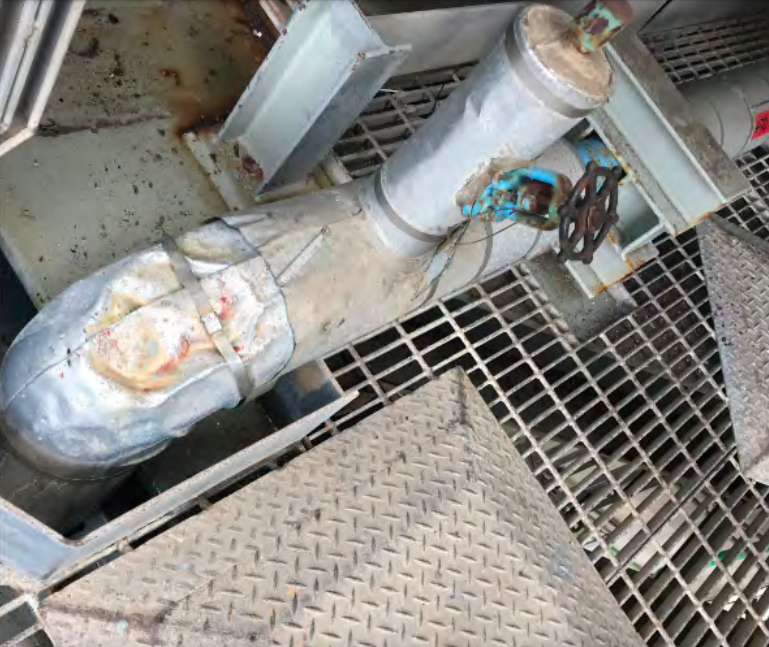‘Unsettling and Unacceptable’ Negligence Uncovered at Diablo Canyon
Report Reveals Significant Failure by Nuclear Safety Inspectors at Avila Beach Power Plant

The Office of the Inspector General issued a damning report on a significant failure by nuclear safety inspectors charged with ensuring the safe operation of the Diablo Canyon nuclear power plant in Avila Beach in southern San Luis Obispo County that led to one of the plant’s two reactors being shut down for eight days in July 2020.
A steel pipe that fed water into the backup cooling system for one of the two nuclear reactors sprung a small leak, allowing 3.9 gallons of water to escape a minute through a hole 1/16th of an inch in diameter. The leak occurred because the pipe had become badly corroded from exposure to moisture that had gotten in underneath the pipe’s insulation material. But the real problem highlighted by the Office of Inspector General for the Nuclear Regulatory Commission (NRC) was the failure of on-site safety inspectors with the NRC to detect the corrosion that led to the leak during an inspection of the plant that took place three months prior.
Worse yet, according to the report, inspectors claimed to have inspected the area of the plant in question, when in fact they had not. “The NRC had not inspected the area where the leak occurred even though its inspection report indicated that inspectors had conducted a complete walkdown of the AFW (auxiliary feedwater system) in April 2020,” the report states.

The Office of the Inspector General was alerted shortly after the leak was discovered on July 23, 2020. The NRC had received numerous tips that the April inspection had been botched, prompting the Inspector General to investigate the inspection. The resulting event inquiry report found that NRC inspectors had spent only five hours during the April 2020 inspection when the procedures required for a complete inspection take 12 hours.
The tip-off that something might have been amiss were the visual “dents” that appeared at the surface of the aluminum sheath covering the insulation surrounding the pipes of the backup cooling system. Such dents — which made it appear the insulation had been stepped on — typically suggests the presence of moisture in the insulation, the report states. In the April inspection — and in subsequent weekly inspections — those dents, it turns out, were overlooked.
The Office of the Inspector General found that responsible parties within the NRCs inspection team did not think corrosion could be identified underneath “crushed” insulation material. Others opined that such degradation was typical for most power plants. In hindsight, senior supervisory officials conceded that the resident inspector “probably” and “maybe” should have followed up more closely.
Sign up for Indy Today to receive fresh news from Independent.com, in your inbox, every morning.
This lack of certainty about a basic inspection function troubled the authors of the Inspector General’s report. When the leak was detected, the reactor in question was not in operation, having been shut down already to allow the plant’s owner and operator, PG&E, to address a hydrogen leak. At no time did the back-up cooling system stop providing coolant to the system, the report stresses. Since then, the report added, all necessary repairs have been made to the pipe.
The back-up cooling system is designed to provide a level of redundancy to a core safety requirement of all nuclear power plants: that there’s enough water to keep the reactor cores from overheating and generating an operational nuclear incident.
It’s not clear from the report when the leak started. What is clear is that it didn’t happen overnight. While the full extent of the corrosion was not specified in the report, it was apparently extensive. Of the 40 sections of pipe that were inspected after the fact, seven were sufficiently corroded that they required replacement.

Congressmember Salud Carbajal, whose district includes Diablo Canyon, said he found the report findings, “unsettling and unacceptable,” adding, “The negligence detailed in this report will erode the public trust in those who are tasked with keeping us safe.”
Diablo Canyon’s two towers are the two remaining nuclear power generators in California. PG&E has decided to shut Diablo Canyon down in 2025 when its license expires rather than make the massive expensive changes likely to be required to get re-licensed.
In light of growing concern over climate change, there’s been a recent resurgence of interest in keeping the Diablo Canyon plant online and operational. Nuclear power produces no greenhouse gases. That effort is likely to go nowhere and is already waning. Governor Gavin Newsom weighed in on the plant’s future this week, stating he thought it should be shut down.
Support the Santa Barbara Independent through a long-term or a single contribution.




You must be logged in to post a comment.